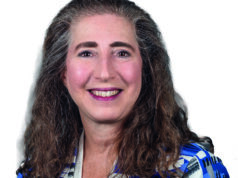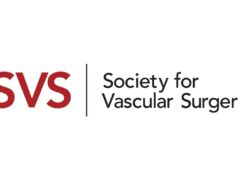
In his introduction to the second of two Presidential Addresses on the 2021 Vascular Annual Meeting (VAM) slate, new Society for Vascular Surgery (SVS) President Ali AbuRahma, MD, gave voice to that which seems virtually undeniable: that the SVS presidency of Ronald L. Dalman, MD, was defined by a double whammy of enormous challenges—both of which enveloped not only wider society but the world of medicine and vascular surgery.
Dalman spent much of his time at the SVS helm dealing with matters related to the COVID-19 pandemic. And the Stanford University vice chair for clinical affairs in the department of surgery was also holder of the SVS office when the diversity, equity and inclusion (DEI) torch was lit in the aftermath of a controversial paper published in the Journal of Vascular Surgery (JVS) in the back half of 2020.
Few might argue he did not meet these twin challenges head on. After a 2020 in which VAM was canceled in the thick of the pandemic, for a while it looked like the 2021 event might suffer a similar fate. Yet, there he stood at the VAM 2021 podium in San Diego, accepting the gauntlet from AbuRahma to deliver his presidential swansong. On the DEI front, too, the SVS tackled head on the fallout from the JVS publication—popularly re-termed #Medbikini in the Twittersphere, Dalman would remind his audience in his address.
So it was that Dalman’s address chimed with the zeitgeist of the times.
“As a nation and as a professional medical association, we have been through a lot this year,” he told those gathered for his lecture Friday morning. “But we’ve learned a lot as well. As Kim Brooks wrote in the New York Times, ‘Pandemics make visible what’s been hidden.’”
Dalman had just taken attendees on a journey through the storied history of both vascular surgery itself and the Society as a representative entity as the SVS marked the beginning 75th anniversary—from birth as a singular specialty, through adolescence and maturation, and into the presence it bears today.
“Courage and commitment were needed to launch a professional society dedicated to an entirely new medical specialty,” Dalman said of the founding years. “But just as our nation has changed tremendously in the ensuing decades, so too has our Society and the specialty it created.”
There was “the breakthrough decade,” as Dalman described it. This saw the introduction of arterial reconstructive surgery; prosthetic grafts followed; and the SVS established its first guidelines committee. Later came non-invasive vascular imaging, then widespread adoption of vascular fellowship training. Into the 1980s, and the rapid evolution and improvement of endovascular technology dawned. The modern SVS emerged as a member services organization in tandem with the rise of multidisciplinary societies. And, more recently, there has been the rapid transition to outpatient treatment and a quality/outcome focus, Dalman added.
So to the present day, the endpoint of his presidency, and the portent of those difficult matters that helped define his time leading the SVS: “And now,” Dalman asked the crowd, “looking forward another 75 years, who and what will define this time, our time?”
He then pointed to the images depicted in the slide projected on the auditorium screens—”my 1987 University of Washington Surgical Residency composite, the 1994 Executive Board of the Society for Vascular Surgery, with Fogarty as president, the 2001 composite of Stanford Vascular Surgery. Nearly all white—with or without the coats—nearly all male, and not remarkable in that way, in their respective contexts. But the world is changing.”
Dalman referenced the changing demographics of the United States. Minorities will constitute a majority of the population by 2042 so the development of “a representative healthcare workforce now will help us better prepare for this future,” he said. “Hannah Valantine, a transplant cardiologist and faculty colleague, recently completed her term as chief officer for scientific workforce diversity at the National Institutes of Health. This slide summarizes her assessment: the health of underrepresented minorities is optimized when physicians from concordant backgrounds are involved in their care. This message was reinforced recently regarding Covid-19 vaccination, by SVS member Lee Kirksey and colleagues from the Cleveland Clinic.”
These demographic trends are mirrored in the vascular world, Dalman pointed out: Data from the 2021 member census showed that more than 50% of SVS members are younger than 50 years of age, and 23% are women. More than a third of SVS members younger than 30 are women, as compared to 3% in his own age group, and more than a third are underrepresented minorities in medicine, regardless of age.
Dalman turned to the case of Samuel Kountz, MD, to illustrate his point. Kountz was a pioneering vascular and kidney transplant surgeon in the 1960s and 1970s, he said. A prolific contributor to the vascular field, Dalman said he appears to have been the first Black surgeon to present his research before the SVS in June 1962 in Chicago.
But Kountz was ultimately lost to the vascular specialty as he pursued the role of chief of kidney transplantation at UCSF in 1967, eventually becoming personally responsible for 25% of all kidney transplants completed in the United States by time of the 1970s.
“Intrigued by vascular surgery and vascular disease management as evidenced by his early investigations, Kountz’s career developed in another direction,” Dalman explained. “I’m embarrassed to say that the records of the SVS don’t tell us who was the first Black member, but it wasn’t Dr. Samuel Kountz, because he never joined. Or more likely, was never asked to join, as far as we can tell, as membership was by invitation in the early years. By failing to encourage and include talents like Kountz’s, how many others’ contributions have been overlooked or lost, to the detriment of our Society, our patients, our history?”
Dalman also scrutinized the Society’s history for its record on gender diversity. “It took 40 years following the founding of the SVS for female vascular surgeons to become members,” he pointed out. By 2013, when Julie Ann Freischlag, MD, became SVS president, women accounted for approximately 8% of the membership.
Ultimately, the SVS strives to be worthy of its mantle as serving the specialty, Dalman continued. “Despite everything we have accomplished, we can and must do better. We must minimize bias, implicit or otherwise, in the workings and processes of the SVS.”
So it was that, in March, the Society committed to achieving the objectives highlighted by the Diversity Task Force led by Bernadette Aulivola, MD, and John Eidt, MD, Dalman said. “The DEI Committee was commissioned as an element of SVS governance structure. Chaired by Vince Rowe, this Committee is already contributing substantially to the work of the SVS. We created a diversity position statement and updated our mission statement, core values and bylaws to reflect these priorities. We are developing DEI educational resources for SVS members, including implicit bias training for leaders throughout the organization.
“We completed the first-ever member census and developed metrics to track DEI progress across multiple domains annually. Since we cannot improve what we cannot measure, this year’s benchmark census will prove invaluable in the years going forward in helping us meet our goals. In fact, progress is being made on every priority outlined on this summary slide from the DEI report. Perhaps most representative is the recent evolution of our Appointments Committee process.”
New blood is important to the Society, Dalman reminded SVS members. “Just as diversity and inclusion vaccinate us against implicit bias in our publishing ventures, so too are youthful perspective, ambition and lived experience the keys to relevance and sustainability for the SVS. To that end, we are advancing plans to create a Young Surgeons Section within the SVS, limited to members in their first 10 years in practice.”
The Society must look ahead to continue getting better, Dalman declared as he brought his address and presidency to its final point: “What brought our organization to this point in its history, impressive as our accomplishments are, won’t be enough to get us through the next 75 years. The world will still need vascular specialists at the turn of the next century, and looking forward to our 150th anniversary in 2096, we must evolve to ensure that the SVS remains relevant and effective in the decades to come.”











